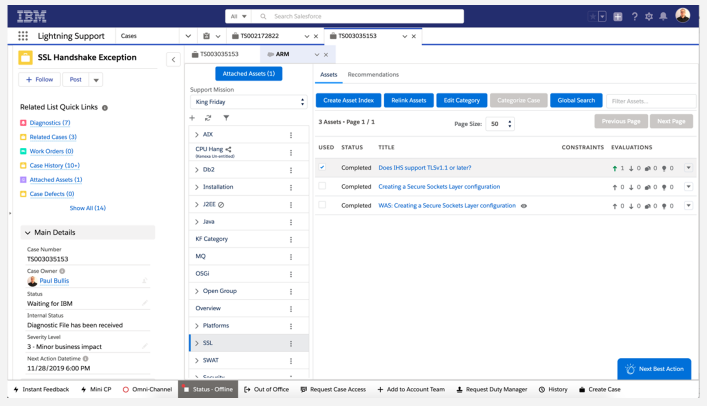Asset Reuse At Scale
Overview

Asset reuse is the practice of using existing assets to solve a problem instead of always creating new assets. This practice can be very effective for organizations as it can help to reduce costs and accelerate completing tasks. One of the main challenges of asset reuse is identifying which assets are available for reuse. Organizations have different types of assets including tools, best practices, and even people that each have their own unique details. These assets may be scattered across different repositories or stored in different formats making it difficult to identify what is available and where it is located. This can lead to duplication of effort as different teams may unknowingly create similar assets which in turn increases costs to the organization.
Another challenge of asset reuse is ensuring that the assets are compatible with the new product or solution being developed. In many cases, assets may have been created for a specific purpose or platform, and may not be suitable for use in a different context. This can result in issues such as compatibility problems, performance issues, or even security vulnerabilities. A related challenge is maintaining the quality of the assets over time. Assets that were created some time ago may have become outdated or may not have been designed with the latest best practices in mind. This can result in suboptimal performance or even introduce security vulnerabilities into the new product or solution.
Asset Index
Using an asset index to manage assets across repositories is a great way to tackle these problems of discoverability and currency/relevancy. An asset index is organized by knowledge domains into categories/sub-categories managed by the actual people who are reusing assets to complete tasks. This ensures that assets are findable using a familiar taxonomy in how the team thinks about asset organization. These categories/sub-categories can be used to derive intents for cognitive solutions that leverage the asset index as a training source. These intents are based on the terminology of users working in the domain which helps with building cognitive assistants using user-provided text to locate relevant assets.
Another key aspect of the asset index is the ability to link a task to the reuse of an asset. This not only allows the system to capture feedback about whether an asset was useful in a particular context but what that reuse is worth in terms of the cost of the task it helped solve. This has been a major challenge of asset reuse and an area where these types of reuse initiatives typically fail. Understanding how recently assets have been applicable to solving tasks and how much cost the asset offsets allows maintainers of these assets to remove old/aging content and to justify building reusable assets as these offset costs to the organization.
Operationalizing Asset Reuse
Using an asset index while powerful can be a burden on users if the index exists as a separate tool from the tool where the actual tasks are being managed. Integrating the asset index directly in the task management tool allows users to easily reuse, attach, and evaluate assets directly from the task which promotes better asset reuse. In IBM, we leverage an asset index called the Asset Reuse Manager (ARM) which is embedded directly in our tools such as Salesforce for managing customer cases where users can quickly find/create/attach assets they find that were helpful in resolving their problem:

Having an asset index embedded in the task management tool also gives the ability to remind a user about asset reuse at key points of the task such as when a task is being closed. In ARM, we show a user a list of assets that have been mentioned in the Salesforce case when a user is closing the case giving them a chance to quickly categorize assets that were not already in the index:

Summary
While asset reuse can be a powerful tool for organizations it’s not without its challenges. Addressing these challenges through the use of an asset index can help organizations better use their existing assets to accelerate innovation and reduce costs while providing valuable insights as to how those assets are making a difference.